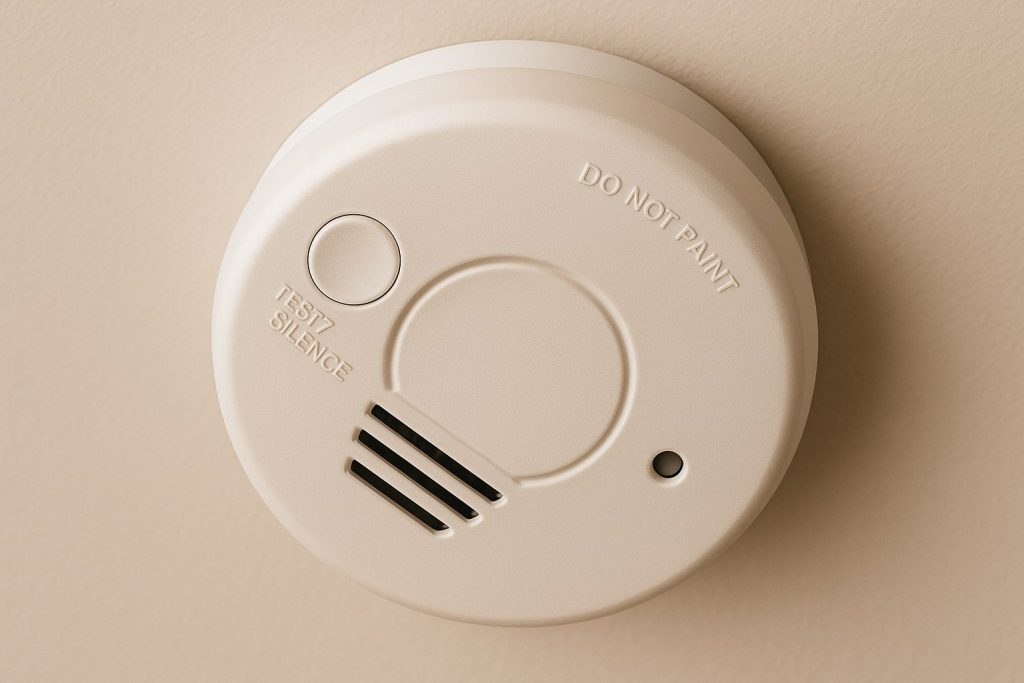When it comes to protecting your home and loved ones, smoke alarms are a must-have. But simply having them isn’t enough; they need to be installed in the right spots to do their job properly. In Australia, smoke alarm placement is guided by national standards and state regulations, all aimed at giving you the best chance of early warning in case of a fire. So, where exactly should you install smoke alarms in your home? Here’s a room-by-room guide based on Australian standards.

Bedrooms and Sleeping Areas
Under current Australian regulations (AS 3786:2014), smoke alarms must be installed in every bedroom of new builds and major renovations. This is because fires that start while you’re asleep are especially dangerous; you won’t smell smoke while you’re sleeping. Installing an alarm inside each bedroom ensures occupants are alerted quickly.
Hallways and Escape Routes
If your bedrooms are grouped together, place a smoke alarm in the hallway outside. For homes with multiple sleeping areas (like one at the front and one at the back), you’ll need alarms outside each cluster of bedrooms. These alarms help sound the alert as soon as smoke enters the common areas.
Living Areas
Install a smoke alarm in or near living areas such as lounges, family rooms, or rumpus rooms. Fires can often start here due to electronics, heaters, or candles. A nearby alarm ensures you’re notified early, especially if you’re not in the room.
Stairways and Multi-Level Homes
For homes with more than one level, it’s essential to install at least one smoke alarm on each floor. Place it in the path of travel to exits; stairwells are perfect locations because smoke rises, and it will travel upwards quickly. This gives you a critical early alert.
Near Kitchens — But Not Too Close
It’s important to avoid false alarms, so don’t place smoke alarms right above or next to the stove. Instead, install a photoelectric smoke alarm about 1.5–3 metres away from cooking appliances. If you want extra protection in the kitchen, consider a heat alarm, which detects temperature spikes without being triggered by steam or minor cooking smoke.
Garages
Garages often contain flammable materials and appliances like battery chargers or dryers. If your garage is attached to your home or has a direct entry door, it’s a good idea to install a heat alarm (rather than a smoke alarm) to avoid false triggers while still maintaining safety.
Ceiling vs Wall Placement
Smoke alarms work best when mounted on the ceiling, as smoke rises. Place them at least 300mm from any corner and away from ceiling fans or air vents to avoid interfering with airflow. If ceiling mounting isn’t possible, you can mount them high on a wall, 100–300mm from the ceiling.
Interconnection for Full Coverage
For the best protection, all smoke alarms in your home should be interconnected. This means when one alarm goes off, they all do. It gives everyone in the house the same amount of warning time, especially important in larger or multi-storey homes.
Professional Installation Makes All the Difference
Proper smoke alarm placement is critical to keeping your household safe. By following this room-by-room guide and complying with Aussie standards, you can rest easy knowing your home is well protected. At Airmelec, we provide expert smoke alarm installation. Our licensed electricians ensure your alarms meet all Australian standards and are installed in the most effective locations.

